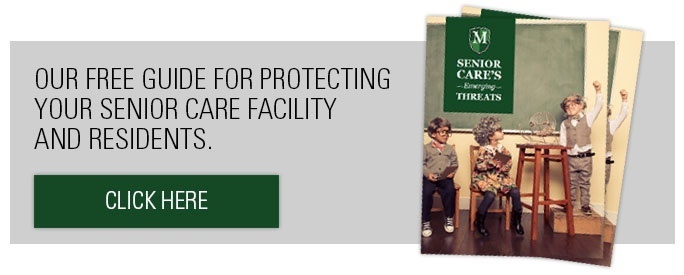Nursing homes provide a safe and stable environment for loved ones as they reach their golden years. These facilities offer the comforts and services that many elderly folks are unable to find elsewhere. Without the safety net of nursing homes, these individuals would be unable to perform some of the most basic tasks for everyday living, including eating, bathing and remaining socially active.
With the high number of claims and lawsuits against senior care facilities by both residents and employees, insurance brokers who underwrite policies for these facilities need to be aware of the changes happening in this constantly evolving sector. One of the biggest problems affecting nursing homes is the inability to provide adequate levels of care due to a lack of staff. Without enough employees to properly administer care to residents, these facilities can face negligence claims and even lawsuits.
Staying staffed
Improvements in medical technology, innovations in vaccinations and increased communication between healthcare providers have created a world where people are living longer. However, as the nation’s life expectancy continues to increase, more Americans than ever will ultimately need to seek out nursing homes for themselves or their family members.
“Lack of staffing is one of the biggest contributors to inadequate levels of care for nursing home residents.”
A lack of staffing is one of the biggest contributors to inadequate levels of care for nursing home residents. As more Americans require higher levels of care, it can leave facilities sorely undermanned. Unfortunately, without enough workers to effectively administer the proper level of care, it can lead to a host of problems for these facilities and their residents.
While the recent passage of the new rule to Medicare and Medicaid Programs with the Reform of Requirements for Long-Term Care Facilities by President Obama will strengthen nursing home oversight, the plan did not include staffing minimum levels at nursing homes, Modern Healthcare reported. Although worker burnout is quite common at these facilities, profit margins are incredibly thin as well, so managers must find a careful balance between remaining fully staffed and maximizing employee efficiency.
Introducing industrial sciences
Meanwhile, a lack of staff leaves nursing homes unable to truly provide the level of care needed. As noted in a recent NPR article, federal government data revealed low staffing levels are the cause of roughly a quarter of all nursing home complaints.
According to the source, a chain of nursing homes in New Mexico are being sued by the state’s Attorney General’s office. The lawsuit alleges it was impossible for the care facilities to provide the level of care they charged for due to the lack of workers.
Taking a page from industrial sciences, analysts are using new time and motion studies to calculate the amount of time it takes a skill-care facility employee to go about his or her daily tasks. The source noted that by measuring how long it takes a worker to bathe a resident, bring him or her food and roll the resident in their bed to reduce the incidence of sores, investigators can now correlate the number of staff members a facility needs to sufficiently provide a base level of care to however many residents live there.
In the case of the example used in the NPR article, the lawsuit alleges the skilled nursing home simply did not have enough people on staff to administer these daily responsibilities to the residents. Therefore, the state brought the case against the facility for charging for care that it couldn’t have possibly provided.
 A lack of staff at senior living facilities is one of the key contributors of complaints.
A lack of staff at senior living facilities is one of the key contributors of complaints.With these tools at their disposal, investigators are now cracking down on care facilities – especially those that take government funds, such as Medicaid and Medicare.
However, proponents of these new techniques argue the new formula is reinventing the wheel. Defense attorney Deborah Mann, who represents the nursing home chain in the New Mexico lawsuit, noted the state already has an established legal standard of care.
“[2.5 hours of nursing care per resident per day is] the standard that was published to the industry,” Mann said. “That’s the standard that the people who ran the nursing homes knew about. And to try to hold somebody in retrospect liable – for essentially lying – is unfair.”
While this case winds its way through the legal system, it will not necessarily bring about immediate nationwide or even statewide changes. However, as commercial enterprises and legal specialists increasingly turn to data analytics and wearable technology to measure everything from staff efficiency to operating costs, senior care facilities will need to make the necessary changes to ensure they’re providing optimal services.
Finding the right partners
With so many evolving trends impacting senior care facilities across the nation, brokers and agents who provide the crucial insurance policies for safeguarding these institutions must have partners they can rely on for industry knowledge, thought leadership and protection against unexpected catastrophes.
With our “Power of the Pen,” McGowan Program Administrators tailor specialized senior care insurance policies that address the unique issues facing nursing homes, assisted living facilities and other senior care homes.



